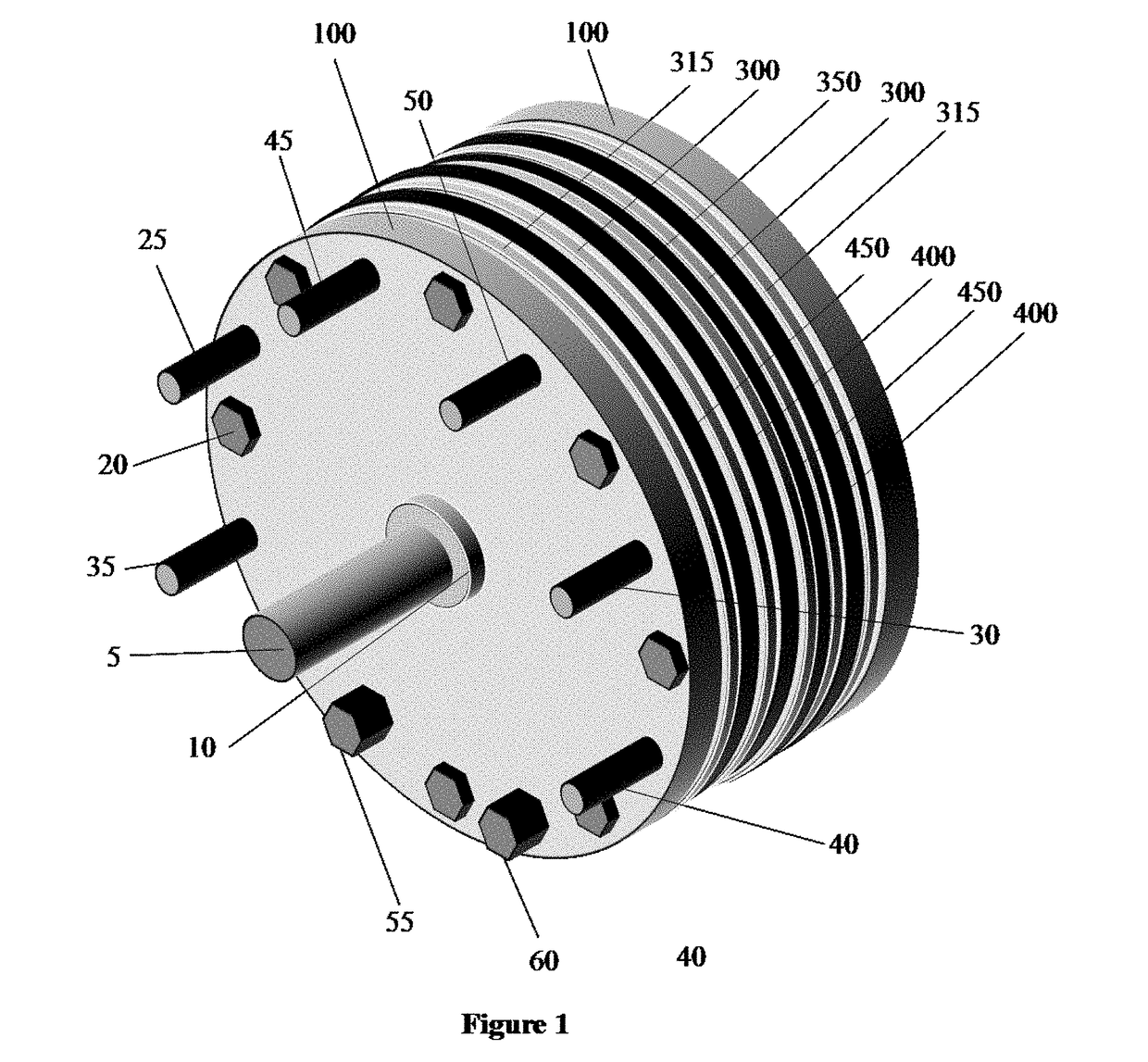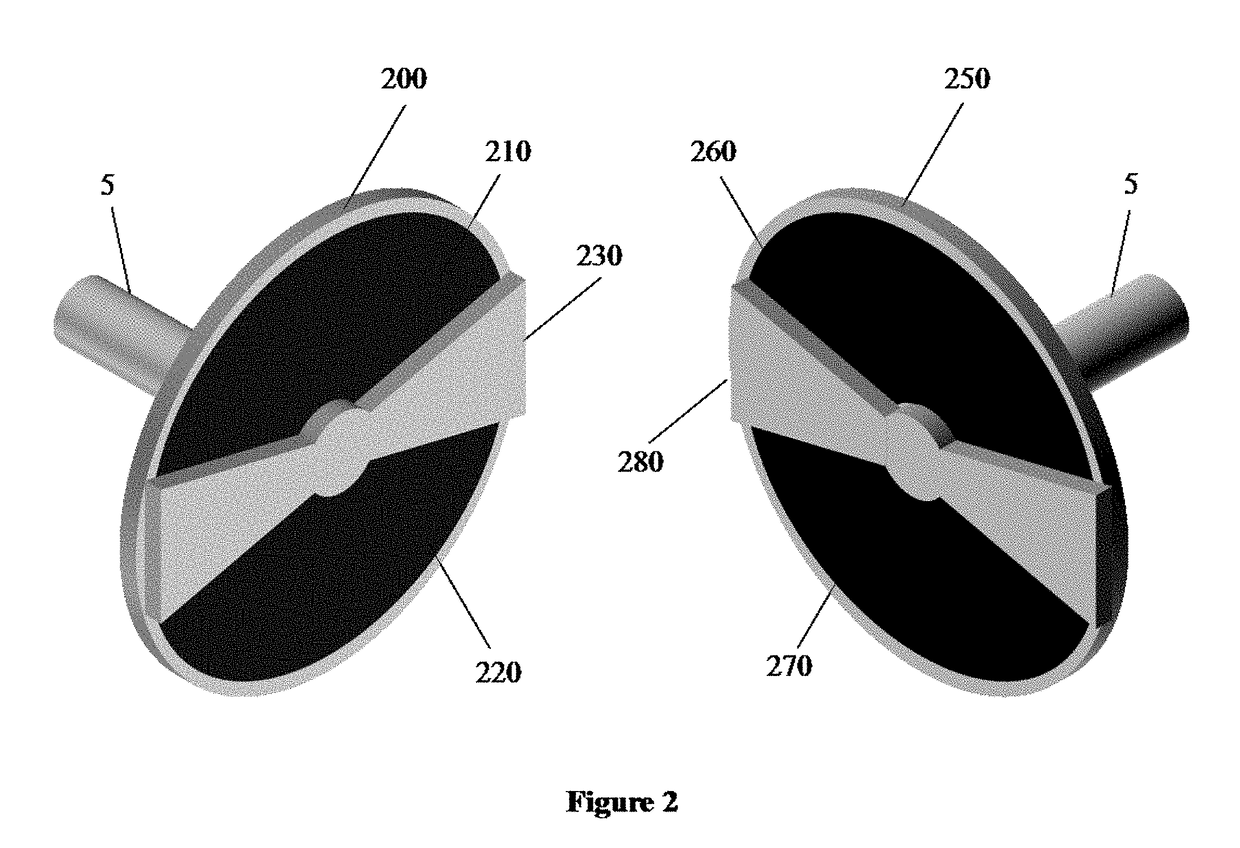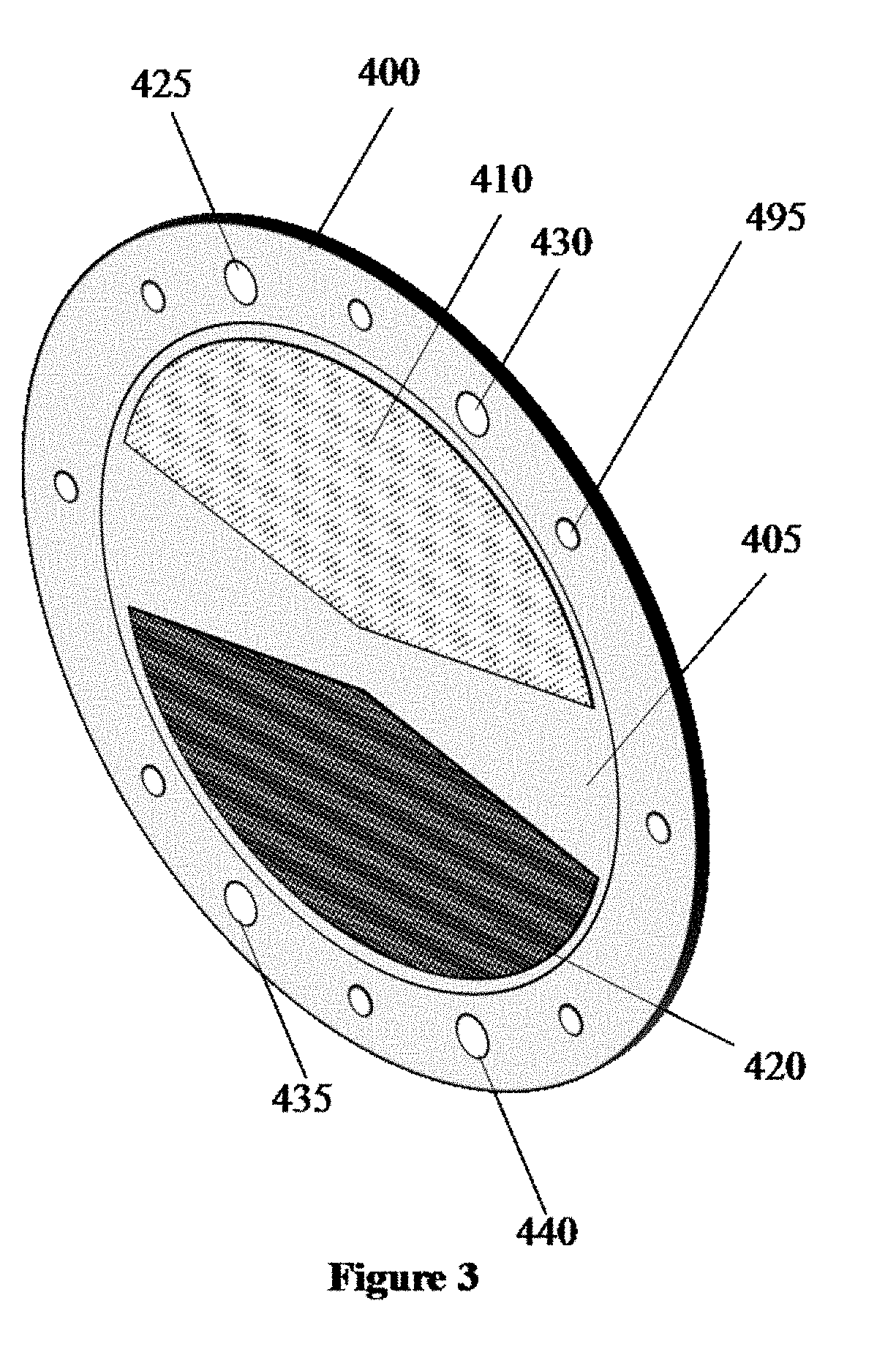Capacitive Electro Dialysis Reversal
- Summary
- Abstract
- Description
- Claims
- Application Information
AI Technical Summary
Benefits of technology
Problems solved by technology
Method used
Image
Examples
Embodiment Construction
[0029]This Capacitive Electro Dialysis Reversal (CEDR) invention combines technologies found in Electro Dialysis Reversal (EDR) and capacitive deionization in a new way to desalinate and concentrate saline waters. An isometric front view illustration of the exterior of the CEDR invention is shown in FIG. 1. CEDR is composed of a stack of components bolted together. Specifically, there are front and rear end plates 100, front and rear supercapacitor electrode assemblies hidden from view as discussed later, multiple thin anion / cation exchange membranes 400, multiple thin cation / anion exchange membranes 450, multiple thin dilute saline water channel spacers 300, multiple thin concentrated saline water channel spacers 350, and two end spacers 315 all bolted together with bolts 20 where six are shown in this illustration. There are the same number of cation / anion exchange membranes as there are anion / exchange membranes and they must alternate in placement from front-to-back. There is sig...
PUM
 Login to View More
Login to View More Abstract
Description
Claims
Application Information
 Login to View More
Login to View More - R&D
- Intellectual Property
- Life Sciences
- Materials
- Tech Scout
- Unparalleled Data Quality
- Higher Quality Content
- 60% Fewer Hallucinations
Browse by: Latest US Patents, China's latest patents, Technical Efficacy Thesaurus, Application Domain, Technology Topic, Popular Technical Reports.
© 2025 PatSnap. All rights reserved.Legal|Privacy policy|Modern Slavery Act Transparency Statement|Sitemap|About US| Contact US: help@patsnap.com



